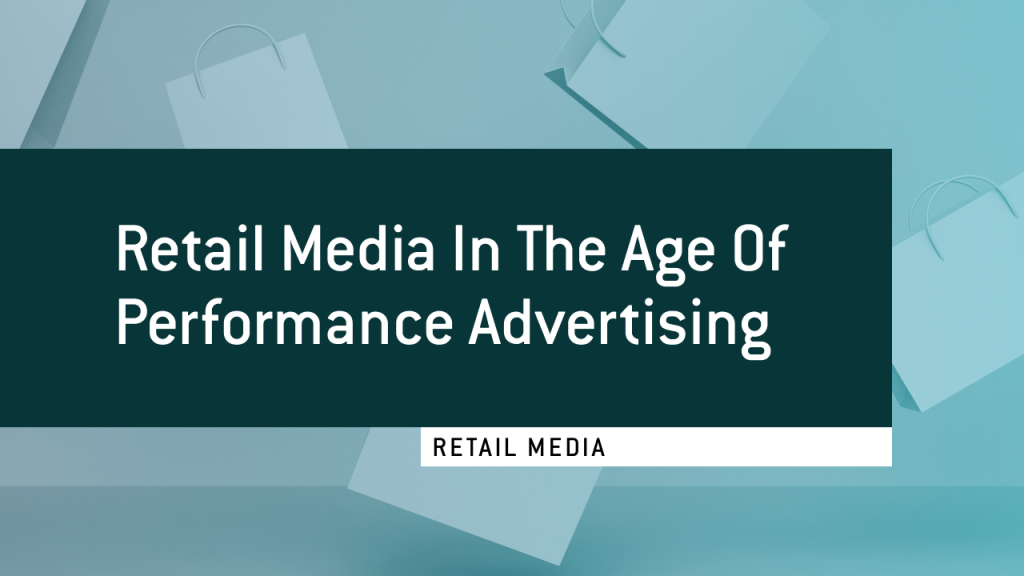
The retail media market needs a paradigm shift. Sponsored Product Ads (SPA) represent a key component of this arena, and fuel the need for its change. This article addresses what Sponsored Product Ads are, their current status, why retailers and brands should pay close attention – and why the landscape requires a serious shake-up.
The retail media market needs a paradigm shift. Sponsored Product Ads (SPA) represent a key component of this arena, and fuel the need for its change. This article addresses what Sponsored Product Ads are, their current status, why retailers and brands should pay close attention – and why the landscape requires a serious shake-up.
So what are Sponsored Product Ads?

Sponsored Product Ads are one part of a broader family of efforts referred to as site monetization programs. They form ad placements, which online retailers sell to brands.
Separate from a retailer’s organic catalog, brands can pay to have their products listed more prominently on a given category page, search results page, or wherever else the retailer decides to offer ad placements. Doing this allows retailers to monetize online traffic beyond their core business (i.e. facilitating purchases from customers). To read more about a retailer’s success using sponsored product ads, check out this case study.
Brands benefit from this in a variety of ways. Beyond just increasing their sales, they can increase their page views in a strategically important category. Further, they can guarantee that products they wish to bring more attention to will be seen by potential customers. These ads can be seen as the online analog of brands paying a brick-and-mortar store to place their products more prominently on their respective shelves, or setting up a cardboard display in a highly trafficked aisle.
Today’s retailers have two choices. Either they can negotiate direct deals with brands to purchase a pre-defined volume of ad impressions at a fixed price, or negotiate a deal with a network demand source. These networks are advertising partners that act as a Demand-Side Platform (DSP) for multiple brands. In the case of a DSP, the DSP receives guaranteed placements and volume from the retailer’s ad inventory; and their clients can bid on these ad impressions. The DSP then picks the most lucrative bid and passes this ad on to the retailer.
The lone, notable exception to this two-pronged approach comes from eCommerce behemoth Amazon. Instead of one-off direct deals or locking its inventory to one DSP, it offers more sophisticated solutions. Brands work directly with Amazon in a competitive ad environment, where they have access to actionable insights about their ads and performance. Further, they can customize their ads, as Amazon offers multiple ad formats for the brands to make use of. Amazon emphasizes this further by controlling its site’s entire ad experience. Brands do not have to worry about their ads existing alongside undesirable content. Nor should they worry about the ads looking foreign or out of place where they are displayed. Amazon produces a consistent ad experience by controlling both the input and the context. For brands, this means little to no risk of harming their reputation.
Further, as there are very few established DSPs in this specific vertical, conditions tend to be poor for both retailers and brands. The fee-per-impression for media sellers hovers at around 30 percent: and a lack of players in the market hardly incentivizes DSPs to offer better deals. Amazon gets around this issue by working directly with the brands for which they already sell products. Without a third party in the middle, brands and retailers save on the fee, and are free to nurture their pre-existing relationships in a mutually beneficial manner. Brands get the exposure they want at a reasonable price, effectively gaining more working media ad dollars. On the other side of the table, Amazon gets to monetize its onsite traffic without having to split the profits.
Sounds like a significant competitive advantage, how does this play out in the market?
Given the state of Sponsored Products Ads described above, no one should be surprised to hear that Amazon dominates this market. Out of SPA’s estimated $5 billion market today, we estimate that Amazon captures $4 billion. That’s 80 percent of the entire market captured by a single retailer.
Some retailers have tried to get around the limitations of tying their ad placements to a single DSP. How, exactly? By building multiple, distinct ad placements on the same page. They make dedicated ad placements (known as “swim lanes”) for different demand sources, resulting in cluttered pages. As the DSPs provide their own ad types and formats, this often results in an inconsistent and noisy page. Little space remains for organic content above the fold.
And a lack of optimization between the two swim lanes compounds the issue. Without competition between them, the ads may affect each other adversely. In the worst cases, the same product may end up winning both placements as the brand works with the DSP too. The result? An abomination of a landing page where the same product is advertised twice, in two completely different looking ads. Had the brand known that this would be the outcome, they likely would rather save their money on the second ad. Achieving good click-through rates are enough of a challenge without competing against yourself.
However, most retailers lack the resources to provide brands with proper performance insights. Without this, the brand will never know that this happened. Instead they remain in the dark, continuing to spend their budgets inefficiently. Additionally, the DSPs have no incentives to give brands information which may cause them to reduce their ad spend. This results in brands opting to spend most of their budgets away from a black box of unknown inefficiency. Where can they take their money whilst avoiding this situation and the potential marketing pitfalls? Amazon.
So should retailers just roll over and let Amazon laugh all the way to the bank?
Not exactly. The good thing about this whole situation is that the facts are laid out bare for all to see. Amazon’s success represents a learning opportunity for every other online retailer out there. Brands don’t like black box solutions. They want insights and a clear path to improvement. They need to know what isn’t working and why, and they need to have the freedom to improve upon those things. Other retailers have relationships with brands they can leverage, just like Amazon did. By talking to the brands, and understanding why they avoid spending more money with them, retailers can close the gap little by little. These relationships already exist. Parties pass money back and forth, and mutually beneficial conversions pan out every single day.
Still, not every retailer will be in a position to offer the brands what they want. For these retailers to capture more of the SPA market, they need the whole ecosystem to change. They need better terms from the DSPs. They need competition between DSPs. Increased competition on an industry level would incentivize more reasonably priced fees, as well as increased transparency and ad customization standards.
It would also require DSPs to compete directly for the retailer’s inventory for every single impression. Only then could the retailer start to capture the true value of their ad inventory. Until the retailers come together on this—and until they put their feet down at a structure that disproportionately benefits the DSPs and pushes ever more money in Amazon’s direction—the status quo will remain. One should keep in mind that DSPs can only earn money with the retailer’s consent. Without supply in the form of ad placements, their demand sources will quickly move elsewhere.
The Sponsored Product Ad market needs a paradigm shift, and it needs retailers and brands alike to come together to usher in a new era. Failure to act has given the world’s largest online retailer an 80% share of a $5 billion market so far, and the latter number will continue to grow. If brands and retailers aren’t vigilant and looking for new approaches, the former number will rise too.
NY KnowGo is back for 2019. Stay tuned for more details on an exclusive event dedicated to Sponsored Product Ads! Keep an eye on our soon-to-be refreshed website here: www.nyknowgo.com







1 thought on “Retail Media in the Age of Performance Advertising”
Great article Nikolai! Programmatic marketing gives sellers the advantage of targeting a specific audience. Walmart for example has given sellers the ability to link to different marketing tactics, in order to make real-time purchases both online and offline. It has a huge benefit in form of amalgamated online and in-store sales data of customers, via the WMX (Walmart Exchange), which is used for website advertising; much like Amazon’s AAP network.